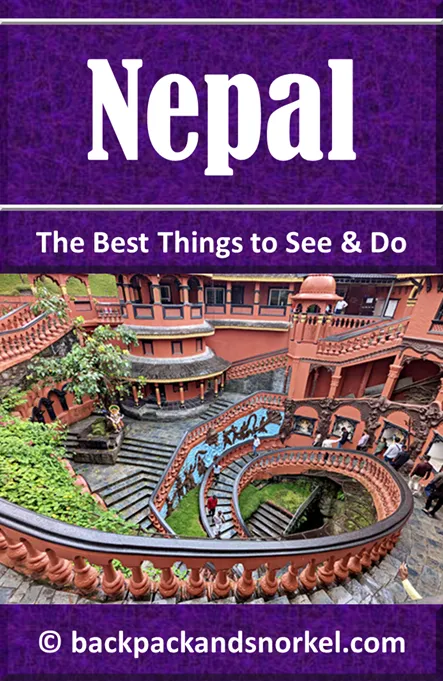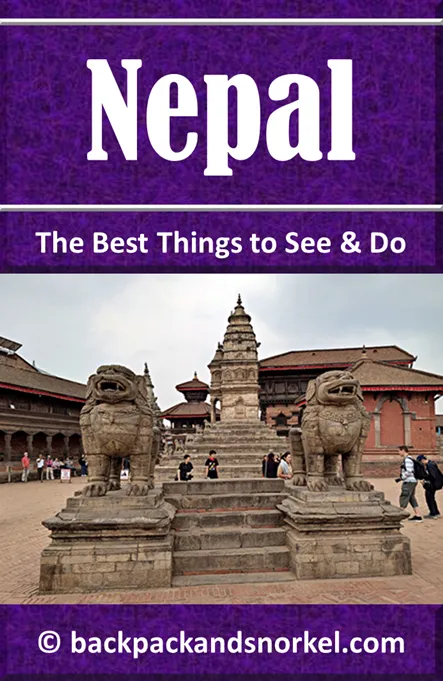Exploring Madyo Parvati Temple: History and Newari Architecture in Kathmandu Durbar Square - Nepal Purple Travel Guide
(map, reviews)
This is Premium Content! To access it, please download our
Backpack and Snorkel Purple Travel GuideDirectly north of Maju Dega Temple is another temple: Madyo Parvati Temple.
The Madyo Parvati Temple in Kathmandu Durbar Square is a sacred Hindu shrine dedicated to Goddess Parvati, known for its cultural significance, traditional Newar architecture, and active role in local religious life.
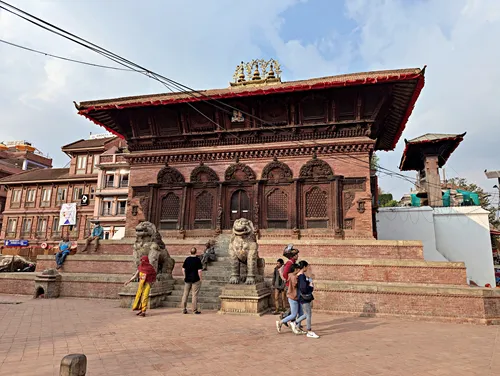
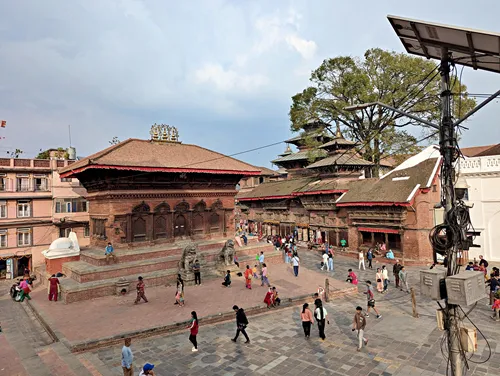
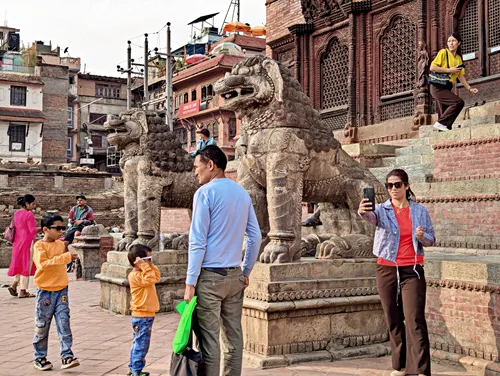
Here at Backpack and Snorkel Travel Guides, we typically promote self-guided walking tours.
But we realize that not everybody likes to walk by themselves in a foreign city. So, just in case that you rather go with ab guide: NO PROBLEM! Please see the Viator tours below.
free GuruWalk tours
paid Viator tours
Origin of the name Madyo Parvati Temple
The name Madyo Parvati translates to ‘Central Parvati’ or ‘Middle Parvati’, with Madyo meaning ‘middle’ or ‘central’ in Sanskrit, and Parvati referring to the Hindu goddess Parvati, the consort of Lord Shiva. As the goddess of love, devotion, and fertility, Parvati plays a vital role in Hindu mythology. The temple’s name likely reflects its central role in the worship of Parvati within the complex layout of Durbar Square.
Historical and Religious Significance of Madyo Parvati Temple
While not as towering or ornate as some of the larger temples in Kathmandu Durbar Square, the Madyo Parvati Temple is revered for its dedication to Goddess Parvati. Its proximity to the Hanuman Dhoka Palace Complex suggests that it may have once served as a royal place of worship.
The temple is an example of Newar-style architecture, featuring intricately carved woodwork and a tiered structure typical of shrines dedicated to female deities in Nepal. Its design reflects the artistic mastery of Kathmandu Valley craftsmen, combining aesthetics with spiritual symbolism.
Role of Madyo Parvati Temple in Daily and Festival Life
The temple remains an active site of worship, particularly during Teej, the festival dedicated to Parvati. During this time, women gather at temples across Nepal to pray for marital bliss and family well-being, and Madyo Parvati becomes a focus of devotion. Offerings of flowers, incense, and red powder are made, and the temple fills with vibrant energy.
The temple is not open to visitors.
Two Lion Statues in front of Madyo Parvati Temple
The two lion statues in front of the Madyo Parvati Temple are known as Simhas, which is the Sanskrit word for ‘lion’. They are traditional guardian figures, often found flanking the entrances of Hindu and Buddhist temples across South Asia and the Himalayas.
Here's an overview of their significance:
Guardian Figures:
Simhas are considered powerful protectors of the temple and its sacred space.
They are believed to ward off evil spirits and negative energies.
They symbolize strength, courage, and majesty.
Symbolic Importance:
Lions have long been associated with royalty and divine power in many cultures.
In Hindu mythology, they are often associated with goddesses like Durga (major Hindu goddess, who is a warrior goddess who combats evil and demonic forces that threaten peace and righteousness) and Parvati (important goddess and wife of Lord Shiva, often seen as the Divine Mother, embodying qualities of nurturing, love, and care), reinforcing their protective role.
Their presence at the temple entrance signifies the importance and sanctity of the place.
Architectural Element:
Simhas are a common architectural element in traditional temple design.
Their placement at the entrance frames the doorway and creates a sense of grandeur and awe.
They are often made of stone, but can be made of other materials also.
Cultural Context:
In the context of the Madyo Parvati Temple, these lion statues are part of the broader tradition of placing guardian figures at temple entrances in Nepal.
They are a visual representation of the protective power of the divine.
Back to your self-guided tour
Author: Rudy at Backpack and Snorkel
Bio: Owner of Backpack and Snorkel Travel Guides. We create in-depth guides to help you plan unforgettable vacations around the world.
Other popular Purple Travel Guides you may be interested in:
Like this Backpack and Snorkel Purple Travel Guide? Pin these for later:

